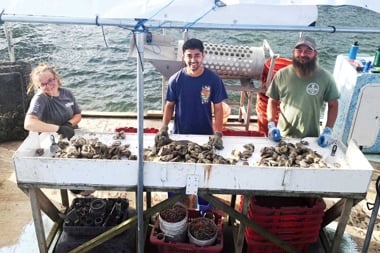Weed Out Toxins
Tender-handed stroke a nettle, And it stings you for your pains; Grasp it like a man of mettle, And it soft as silk remains. -Old Scottish Ditty Centuries ago, a miser found a pot of gold..
Centuries ago, a miser found a pot of gold. He decided to bury it where no one else would find it.
He took the gold home, placed it in a sack and went to bed. During the night a mouse gnawed a hole in the sack. The next morning the miser carried the sack into the woods unaware of the hole in the sack. Coin by coin the gold dropped out. When the miser realized this he retraced his steps and found that the coins had been turned into beautiful yellow flowers, rooted to the ground. The wood sprites had overheard his plan and to punish him for his selfishness they turned the gold into dandelions for everyone to enjoy and share!
Cleansing Diuretic
The dandelion leaf is a powerful diuretic. It's used as a cleanser and to treat high blood pressure by reducing the volume of excess body fluids. Unlike pharmaceutical diuretics, which cause a loss of potassium, dandelion leaves contain high amounts of this important mineral and provide a net gain.
Dandelion leaves are more nutritious than spinach. The leaf is best harvested in spring or early summer and preferably before flowering. Later in the year the leaves become tough and bitter. Even young leaves are bitter [that's the medicinal part]. Cooked or served raw in salads, it's advisable to combine dandelion with other greens. Don't cut or tear dandelion leaves until you're ready to use them. When cut, the cells are damaged, releasing an ascorbic acid oxidase. This chemical destroys the herb's vitamin C.
Herbalists endorse dandelion root as one of the most effective detoxifying herbs. It works primarily on the liver and gall bladder to remove waste and toxins. German research published in 1959 validated dandelion root as an effective liver cleanser and bile stimulator. Because of these qualities, the root has helped clear up many eczema-like skin problems.
The roots are harvested in the fall when the nutritional compounds are highest. For example, autumn-harvested roots contain about 40 per cent inulin compared to only two per cent in spring-harvested roots. However, frost will diminish dandelion's nutritional content.
Dandelion leaf and root are sanctioned by herbalists for the prevention of gallstones and may even help to dissolve already formed gallstones. The fresh latex from dandelion stems has been used to banish warts if applied several times daily. Only harvest dandelion leaves or roots well away from traffic and industrial areas where you know they haven't been sprayed.
Nettles for Courage
Stinging nettle (Urtica dioca) is a very effective cleanser and detoxifier and has long been used as a protective herb. According to folklore, a vase of freshly cut nettles under a sickbed is supposed to help the patient recover from whatever is ailing him or her.
Legend maintains that the stinging nettle was brought to Britain by Roman soldiers who used it for "urtification." That is, they beat themselves with the herb to encourage surface blood circulation in an effort to keep warm in the dismal, damp climate to which they had been banished.
Recent tests in organic gardening have confirmed that nettles make a great companion plant, helping to produce healthy vegetables such as broccoli and conferring keeping qualities on tomatoes by impeding the fermentation process in the plant's juices.
Nettles increase the production of essential oil in peppermint and boost the potency of all nearby herbs. They add nutrients in your compost heap and accelerate the breakdown of matter into robust humus. Nettles are perennial, with a germination period of 10 to 14 days. They prefer full sun to partial shade and like a slightly damp soil rich in nitrogen. The herb is propagated by seed, cuttings or root division.
As a vegetable, nettles are best when they're young and tender, but for medicinal purposes the herb should be collected when the flowers are in bloom, anytime from June to September. The herb is also a good source of protein and dietary fibre. The sting is caused by formic acid. It's astringent, diuretic, tonic and hypotensive (reduces blood pressure) and it strengthens and supports the whole body.
Throughout Europe nettles are used as a spring tonic and general detoxifying remedy. In some cases of rheumatism and arthritis they are astoundingly successful. In cases of childhood eczema, especially nervous eczema, nettle tea is beneficial. As an astringent they may be used for nosebleeds or to relieve the symptoms wherever there is hemorrhage in the body, for example in uterine hemorrhage. Research into the therapeutic properties of nettle root in the US, Germany and Japan show promise for its use in the treatment of benign prostate hypertrophy (enlargement).
Cleansing Tea
2 tsp (10 ml) fresh, washed dandelion root gathered in fall and finely chopped
2 tsp (10 ml) of nettle leaf (fresh or dried), finely chopped or ground
1/2 tsp (2 ml) each of oat straw, fennel seed and corn silk
1 litre of boiling water
Pour boiling water over the herbs. Steep in a pot for 20 minutes. Strain the herbs and drink one or two cups as needed.
Popeye's Standby
Stinging nettles are the best blood cleansing herbs known because they are rich in iron, more than even spinach. In early spring you can pick the leaves and steam them briefly (they're delicious served with potatoes). No one will be able to taste the difference.
Stinging nettles grow where there is iron in the ground. When a farmer discards old machinery and iron parts on the back pasture, it won't take long for nettles to flourish. The iron is absorbed by the plant and turned into an organic form. An excellent remedy for anemia.
Source: Siegfried Gursche, MH




